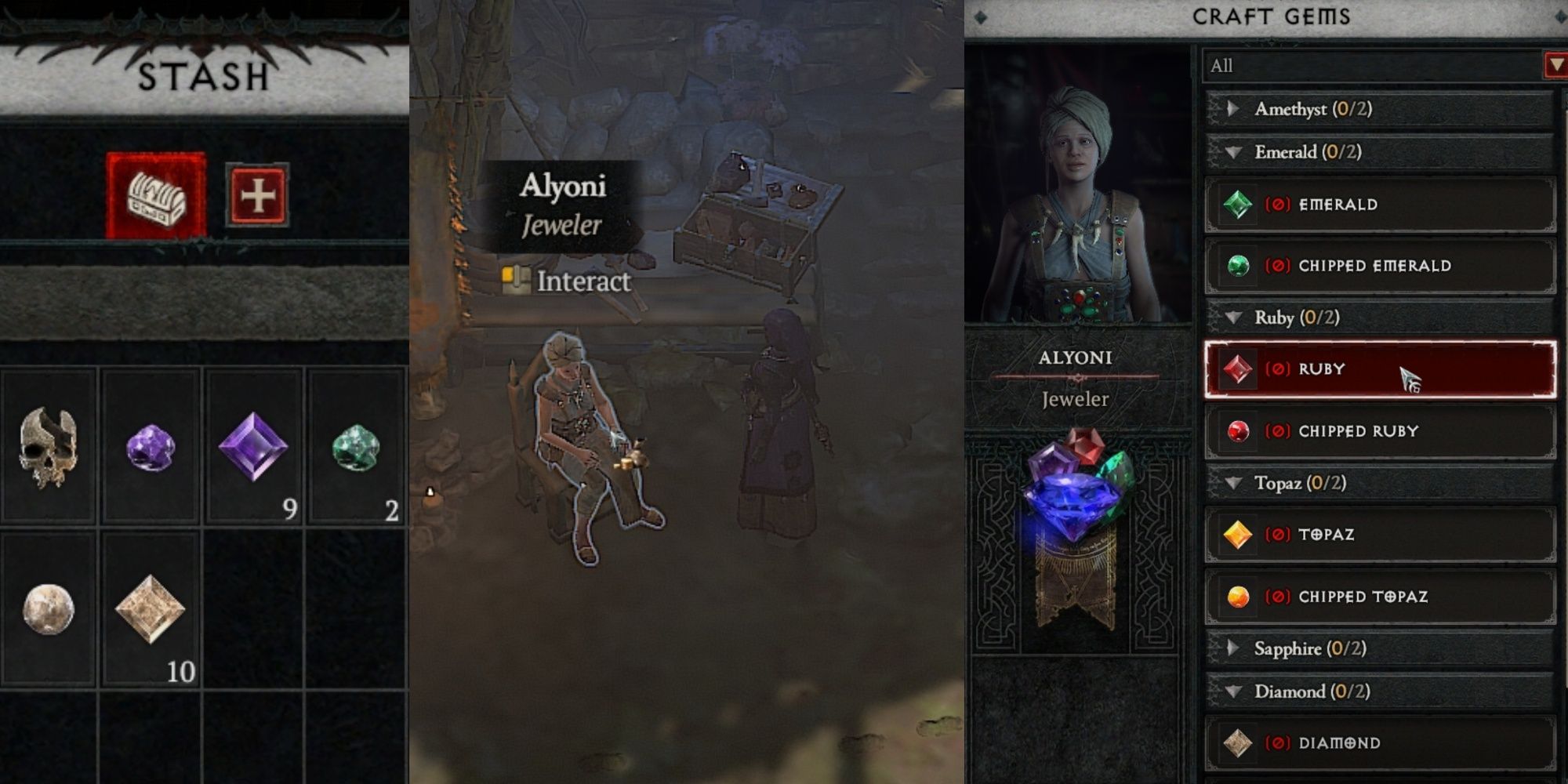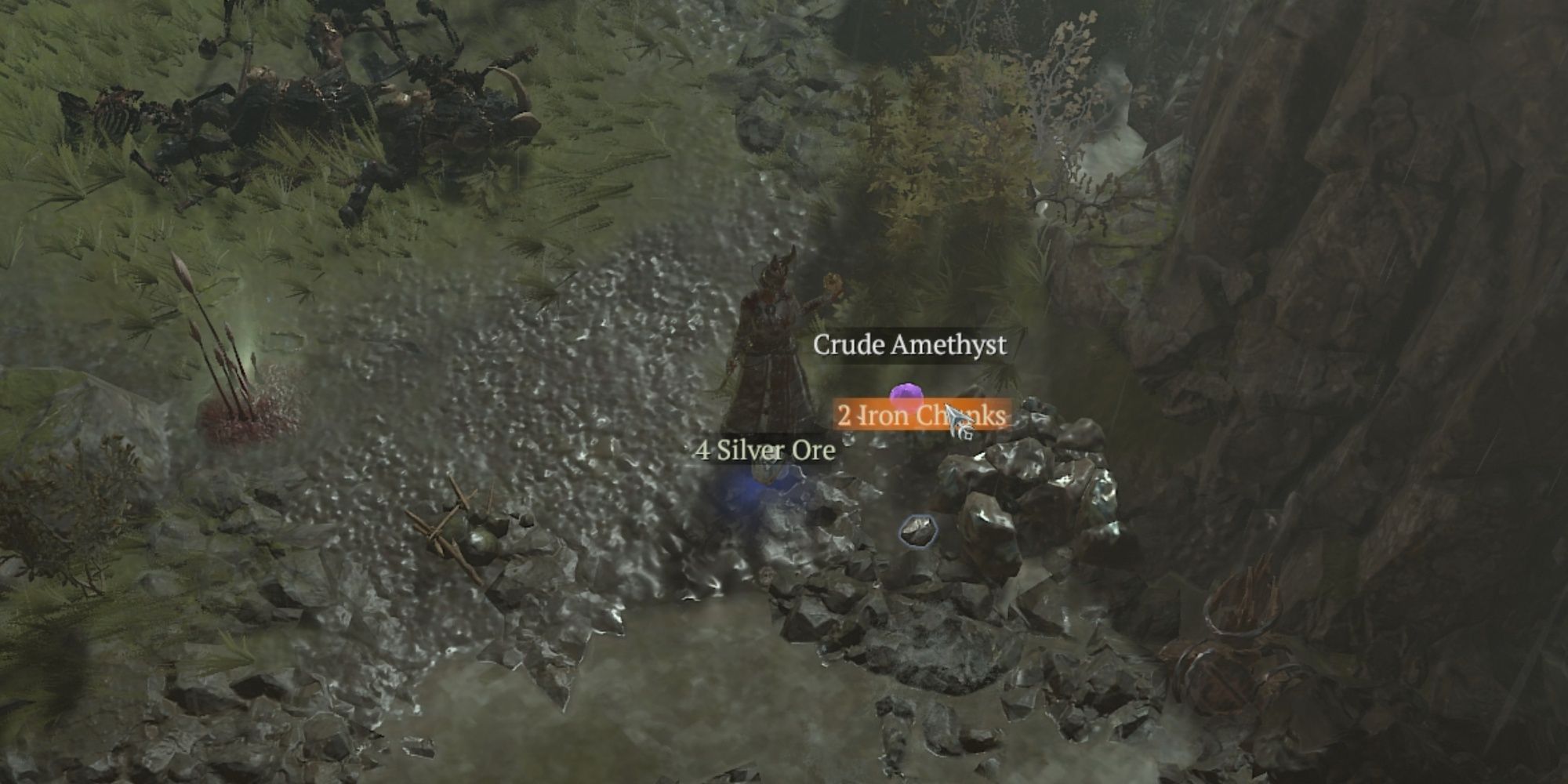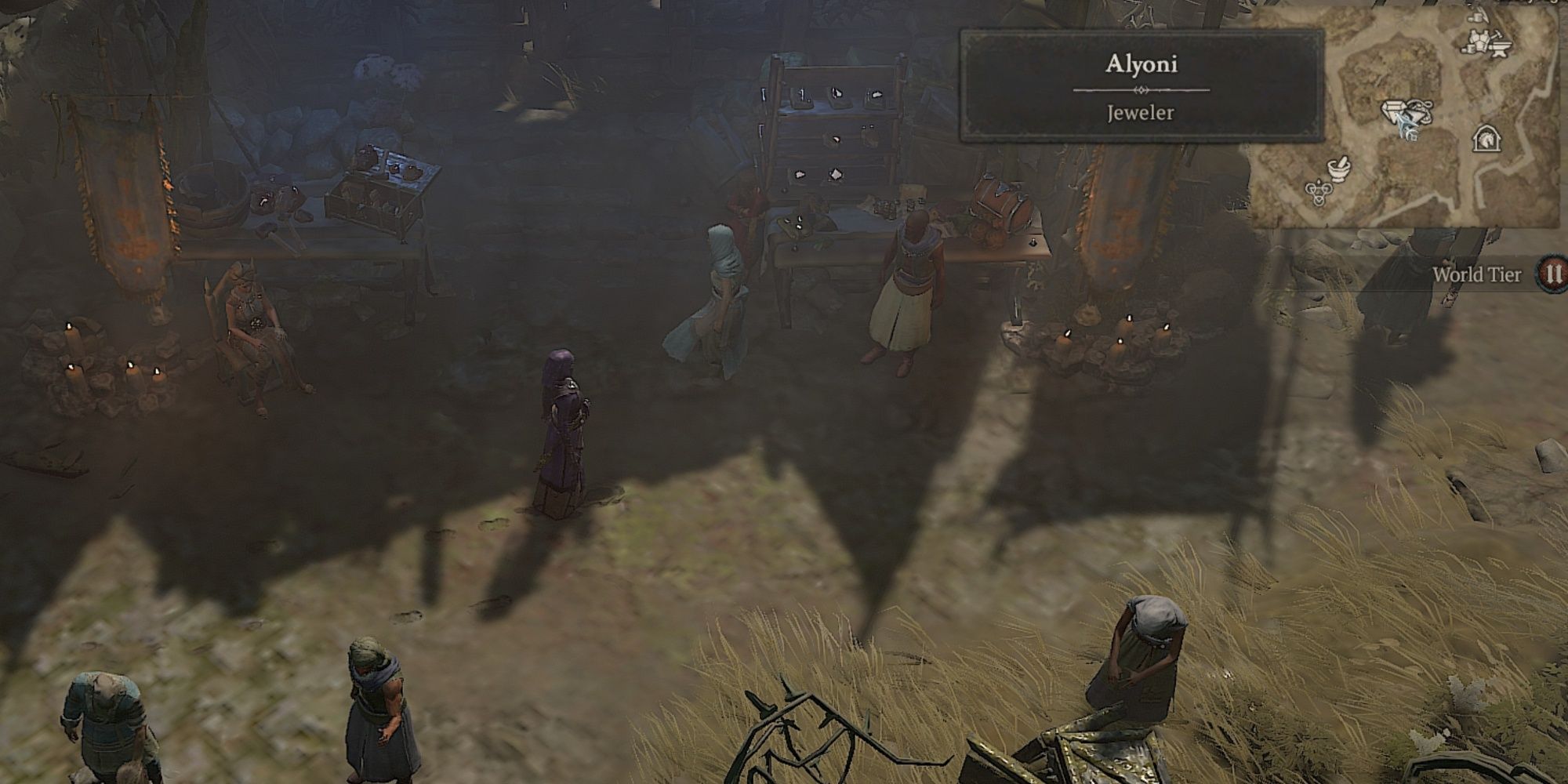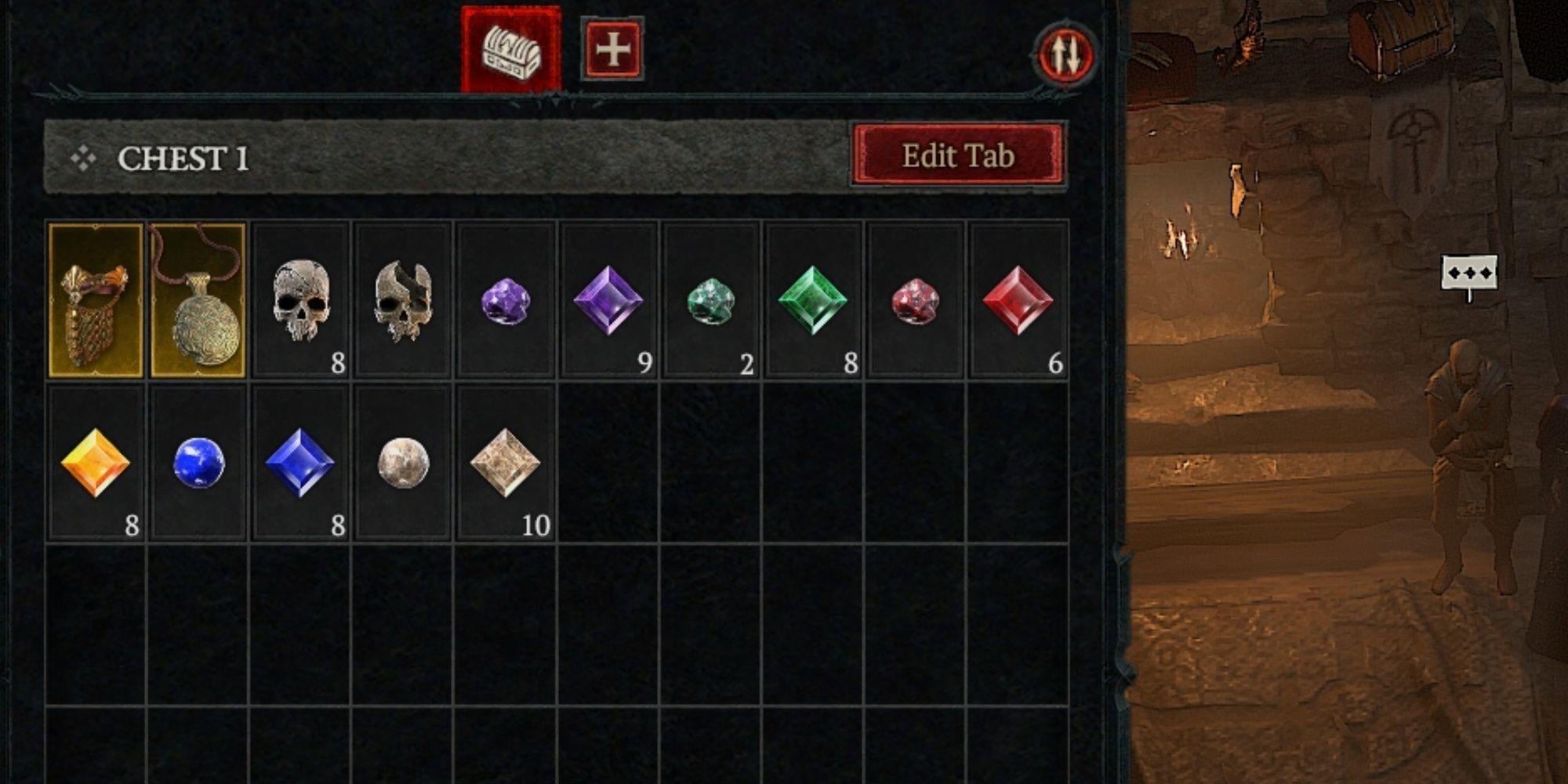For more than 20 years, the Diablo franchise has been giving players shiny and expensive baubles for both cool decoration and increased power. One of the many new features that Diablo 4 has brought to the overflowing loot chest is nothing less than a virtual pile of glittering gemstones.
Unlike other RPGs that have Jewelcrafting or Mining professions that deal in gemstones, Diablo 4 offers the services of a Jeweler for all of their cutting, socketing, or upgrading needs. None of these options are available to the character until level 20, but for the rest of the game, it's an essential detail, especially for the endgame. Here's everything players need to know about this NPC.
Finding Gems
Players will find gems throughout the open world well before they can use the Jeweler to cut them. The ones that are found in iron ore nodes will be of chipped or crude quality. They can still be placed into sockets in this way, but at this point in the game, it's preferable to collect them and keep them until level 20, when the Jeweler can upgrade them.
Most gems will be found in iron nodes scattered throughout Sanctuary. These nodes are more plentiful in rocky areas, tunnels, or old mines.
The Skulls that players find are used and classified as gems, but they are the only ones that won't be found in iron ore nodes. They drop from slain enemies and are occasionally found in chests or loot caches.
Unlocking The Jeweler
Once the player reaches level 20, a priority quest will appear in their log to visit the Jeweler. All that's required is to pay the Jeweler to cut a gem, any gem, and the quest is complete. Keep a few gems in the Stash or Inventory to complete this quest as soon as it becomes available.
The Ring and Amulets vendor is always located near or next to the Jeweler, but this NPC only sells rings and amulets and can't provide the same services. Smaller towns that have a Ring and Amulets vendor will not always have a Jeweler.
Using The Jeweler
Like certain other specialty vendors, such as the Alchemist or the Purveyor of Curiosities, not every town has a Jeweler. Their services become more useful as the character progresses in levels and gets some experience with managing upgrades and gem sockets.
Any Jewelcrafter can provide any of the following products and services, provided the character is of the appropriate level, has the right materials, and pays the service charge.
- Crafting Gems: Players will use this service more than any other to make gems of better quality for their gear. Gems can be socketed in rough form, but upgrading them means higher bonuses. It takes three of any kind of gem for the Jeweler to make one of a higher level.
- Adding Sockets: Useful pieces of equipment can get even better with the addition of a socket or two. This requires a rare material known as Scattered Prism, which drops from world bosses or is salvaged from items of Legendary quality.
- Removing Gems: If the player changes their mind about a gem in a certain socket, they can take it out and replace it with another one. This requires certain resources and a payment of gold, but at least the gem is returned intact and can be used again.
- Upgrading Jewelry: This is similar to the process for gear at the Blacksmith and requires similar resources. Players can visit the local Alchemist if they need something refined.
The character doesn't need to have any of the gems in their inventory for the Jeweler to cut them. If they're in the stash, they can be cut by the Jeweler, and the newly cut gem will appear in the character's inventory. Other items in need of upgrades or socket adjustment, however, do need to be in the player's inventory.
Gems
There are five grades of gems in Diablo 4: Crude, Chipped, Standard, Flawless, and Royal. Players can use Chipped at level 20, and they get an upgrade every 20 levels. This means they get Standard at 40, and Flawless at 60. Royal gems are for max-level characters. Gems have different bonuses and effects depending on whether they're affixed to weapons, armor, or jewelry.
Name | Weapon | Armor | Jewelry |
|---|---|---|---|
Amethyst | Increase to Damage-over-Time abilities | Decrease to damage taken from DoT abilities | Improved shadow damage resistance |
Diamond | Increase to Ultimate Skill damage | Increase to barrier-generation abilities | Improved resistance to all elements |
Emerald | Increase to Critical Strike damage on Vulnerable enemies | Increase to Thorns | Improved poison damage resistence |
Ruby | Overpower damage increase | Increase to maximum hit points | Increased fire resistence |
Sapphire | Increase to Critical Strike damage on crowd-controlled enemies | Increase to damage reduction while Fortified | Improved cold damage resistence |
Skull | Gives life to the character for every kill | Increases the rate of healing | Increase to armor rating |
Topaz | Basic Skill damage increase | Reduction to damage while Control Impaired | Improved lightning damage resistence |





